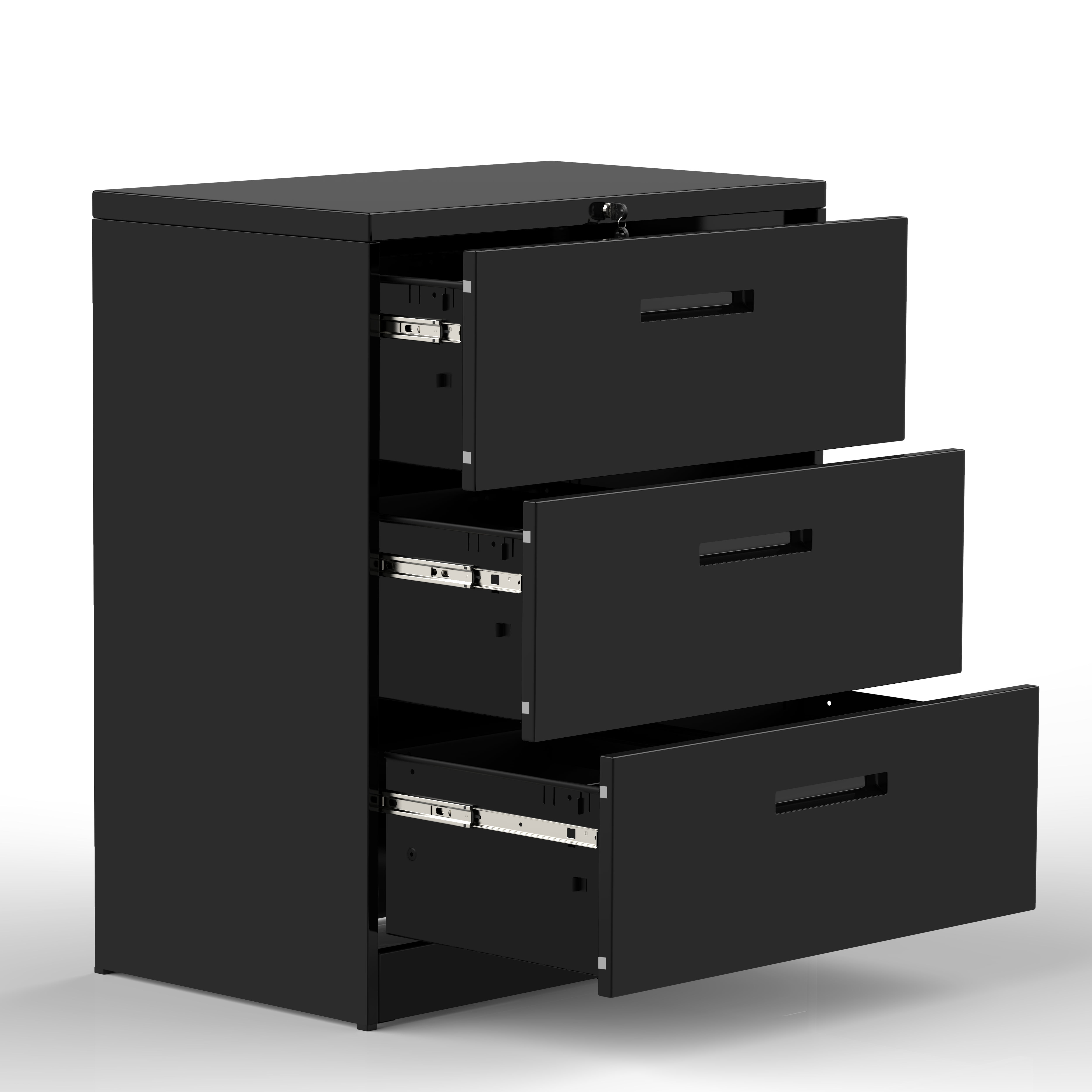Practical Applications and Usage Scenarios

A 3-drawer wood file cabinet with a lock offers a versatile and secure storage solution for a variety of settings, providing both organization and protection for valuable documents and personal items. Its classic design blends seamlessly into diverse environments, enhancing functionality and aesthetics. The locking mechanism adds an essential layer of security, safeguarding sensitive information and personal belongings from unauthorized access.
The benefits of using a locking cabinet extend beyond simple storage. The inherent security features deter theft and unauthorized access, protecting confidential documents, financial records, and other sensitive materials. Furthermore, the organized structure of drawers promotes efficient filing and retrieval of documents, saving time and reducing frustration in the daily workflow. This contributes to increased productivity and a more streamlined work environment.
Home Office Applications
In a home office setting, a 3-drawer wood file cabinet provides a dedicated space for organizing personal and financial documents. Imagine a small, yet functional home office tucked away in a spare bedroom. The cabinet, perhaps a rich mahogany finish, sits neatly beside a desk, its drawers containing tax returns, insurance policies, and important family documents. The lock ensures that sensitive information remains private and protected from curious eyes, maintaining a sense of order and security within the home workspace. The cabinet’s wood construction complements the overall aesthetic of the home office, integrating seamlessly into the existing décor.
Small Business Office Applications
For small businesses, this type of cabinet offers a practical solution for managing client files, invoices, and other important business documents. Picture a vibrant, small startup office. A sleek, dark-stained wood cabinet stands in a corner, its drawers neatly organized with client files, contracts, and financial records. The lock safeguards sensitive business information, protecting client confidentiality and ensuring regulatory compliance. The cabinet’s sturdy construction and organized design contributes to a professional and efficient work environment, reflecting positively on the business image.
Shared Workspace Applications
In a shared workspace environment, the cabinet provides individual secure storage for employees or tenants. Consider a bustling co-working space. Each individual workstation has a designated area, with a light oak wood file cabinet providing a personal and secure storage solution for individual projects and documents. The lock ensures that each person’s work remains private and protected from colleagues, fostering a sense of security and trust within the shared environment. The cabinet’s neutral color and simple design blend seamlessly into the shared space, avoiding visual clutter and maintaining a professional atmosphere.
Maintenance and Care: 3 Drawer Wood File Cabinet With Lock

Proper maintenance is key to extending the lifespan of your 3-drawer wood file cabinet and preserving its aesthetic appeal. Regular cleaning and careful handling will prevent damage and ensure smooth operation of the locking mechanism. Neglecting these tasks can lead to premature wear and tear, potentially requiring costly repairs or even replacement.
Regular cleaning prevents the accumulation of dust, dirt, and grime, which can dull the wood’s finish and damage the locking mechanism. Furthermore, preventative measures can significantly reduce the likelihood of scratches, dents, and other cosmetic imperfections. A well-maintained cabinet will not only look better but also function more efficiently.
Cleaning and Maintenance Procedures, 3 drawer wood file cabinet with lock
Cleaning your wooden file cabinet should be a routine task. Begin by dusting the entire surface with a soft, dry cloth or a microfiber duster to remove loose dust and debris. For more stubborn dirt, use a slightly damp (not wet) cloth with a mild, wood-safe cleaner. Avoid harsh chemicals, abrasive cleaners, or excessive moisture, which can damage the wood finish. After cleaning, immediately dry the surface thoroughly with a clean, dry cloth to prevent water stains. For the lock mechanism, use a soft brush to remove any accumulated dust or debris. Periodically, you can lubricate the lock with a small amount of graphite powder or a specialized lock lubricant to ensure smooth operation.
Preventing Scratches and Dents
To minimize scratches, handle the cabinet with care. Avoid dragging heavy objects across its surface. Use protective felt pads under heavy items to prevent scuffs and scratches. When moving the cabinet, lift it instead of sliding or dragging it across the floor. Minor scratches can sometimes be buffed out with a wood polish designed for your cabinet’s finish. For deeper scratches or dents, professional repair might be necessary.
Addressing Lock Malfunctions
Regular lubrication of the locking mechanism is crucial for preventing malfunctions. If the lock becomes stiff or difficult to operate, try lubricating it with graphite powder or a specialized lock lubricant. Avoid using excessive force, as this can damage the locking mechanism. If the problem persists, consult a professional locksmith or cabinet repair specialist. Regular inspection of the key and the keyhole for debris will also prevent potential lock issues. A slightly bent key can also cause problems; a locksmith can assist in straightening a slightly bent key or replacing it if necessary.
Importance of Regular Maintenance
Regular maintenance is an investment in the longevity of your wooden file cabinet. By following a simple cleaning and maintenance schedule, you can prevent costly repairs and extend the life of your cabinet significantly. A well-maintained cabinet will not only look its best but will also function smoothly and reliably for years to come. Ignoring maintenance can lead to accelerated wear and tear, resulting in damage to the wood, the finish, and the locking mechanism. This could necessitate expensive repairs or even replacement of the entire cabinet.
